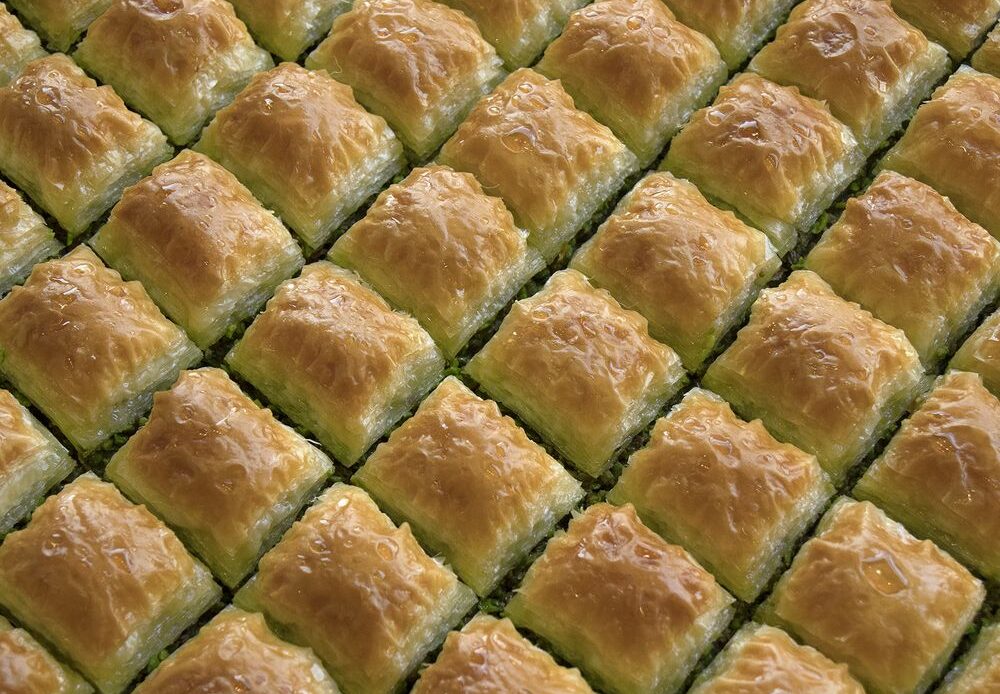Baklava consists of fine layers of pastry dough, often filled with nuts and sweetened with syrup or honey.
Izzet Keribar/Getty Images
Efkan Güllü’s family has been in the business of baklava for more than five generations. The current owner of Güllüoglu Baklava—a famed bakery based in Gaziantep, Turkey, with dozens of branches around the world—Güllü is the latest in a long line of pastry chefs that began with his great-grandfather, who first learned to make the sweet, flaky desserts while stopping in the ancient cities of Aleppo and Damascus on his way back from the Islamic Hajj pilgrimage in 1871.
“In our family, you open your eyes to the world, and the first thing you see is baklava,” Güllü says. “We learn the profession starting from childhood.”
The dessert consists of fine layers of pastry dough, often filled with nuts and sweetened with syrup or honey. “Baklava is made by thinning the dough to a fine micro-degree, and by putting 10 or 11 layers on top of each other by hand,” says Güllü. It is not a process conducive to automation. “It’s truly a craft. It requires a long education to be able to roll out baklava dough so thin.”
Efkan Güllü is the current owner of Güllüoglu Baklava—a famed bakery based in Gaziantep, Turkey, with dozens of branches around the world. Güllüoglu Baklava
The origins of baklava date back to ancient times. Around the eighth century B.C.E., people in the Assyrian Empire, which spread across parts of modern-day Iraq, Iran, Kuwait, Syria and Turkey, arranged unleavened flatbreads in layers, with chopped nuts in between, to be enjoyed during special events. Centuries later, the Ancient Greek and Roman “placenta cake” (the Latin placenta coming from the Greek word plakous, or “cheese cake,” not the unsavory afterbirth) was a dish consisting of many layers of dough, filled with cheese and honey and flavored with bay leaves. However, the earliest versions of baklava as we know it today came around 500 years ago, during the Ottoman Empire.
“The earliest reference to baklava is in a poem by the mystic Kaygusuz Abdal, who lived in the first half of the 15th century,” writes Mary Isin, an Ottoman food historian, in her book, Sherbet and Spice: The Complete Story of Turkish Sweets and…
Click Here to Read the Full Original Article at Travel | smithsonianmag.com…
